

10 mixed questions

How many correct answers will you get?
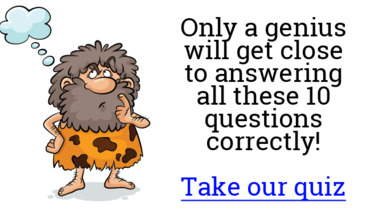
How deep does your knowledge go?

How many correct will you get?
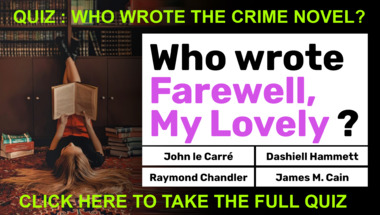
10 mixed questions

Lets see how smart you really are!
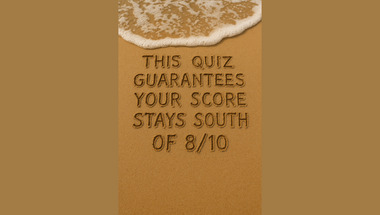
Click here to take the quiz

10 questions

Is your mind creative?
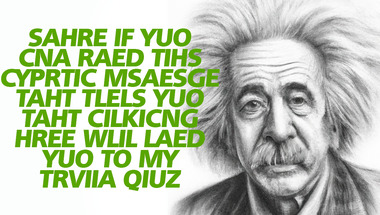
You got a math brain?

How many correct will you get?

Let me know your score in the comments

Did you pay attention in school?

10 Impossible Questions
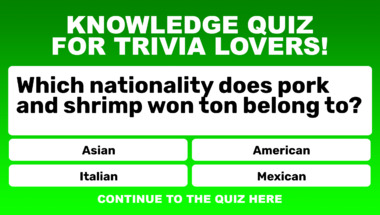
Expert questions for developed minds
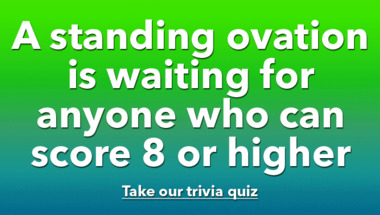
How many correct will you get?

10 questions than even a monkey can answer

Is your IQ high enough for these questions?
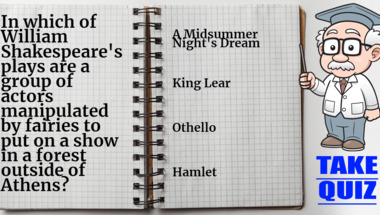
Mixed category quiz
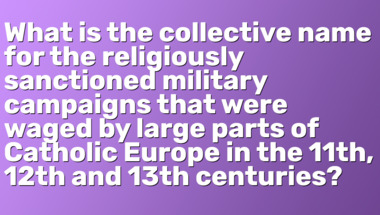
How many correct will you get?
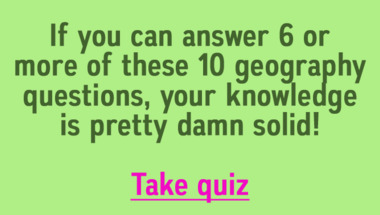
10 questions in misc categories

10 questions to answer

What do you remember?

Are you smart enough for this one?

How many correct will you get?

10 food and cooking questions

10 mixed questions to have fun with

10 questions

Are you ready? :)

Level : VERY HARD

Most people wont even get 7 out of 10 correct

Tell your score in the comments!

Let us know your score in the comment section

How many correct will you get?

10 songs to guess

10 mixed questions

8/10 will only happen if youre a genius!

10 mixed history questions
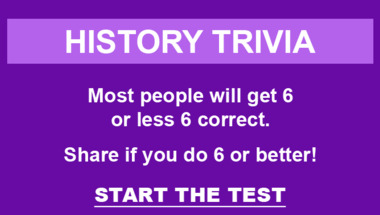
10 mixed trivia questions

Are you a genious?

10 Almost Impossible Questions

10 questions
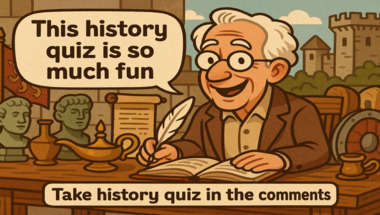
How many of these food questions can you answ..

10 questions to test your knowledge

Did you live in this awesome decade?

10 mixed questions

10 questions

We wrote 10 questions in mixed categories

10 questions

Can you get more than half of them right?

10 mixed questions to have fun with
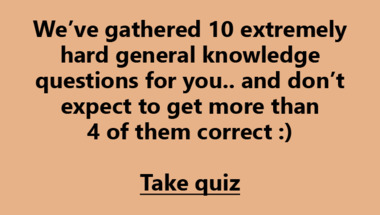
10 mixed genereal questions

Take the quiz right here

Can you score 8/10?
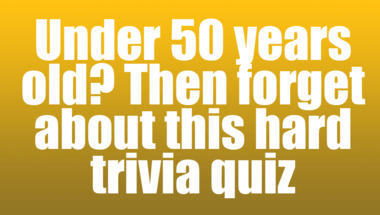
How many correct answers will you get?

10 questions to answer

Let's see how smart you really are!
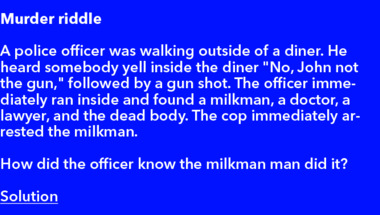
10 questions of mixed trivia

How many of them will you answer correctly?

Are You Expert Enough For This One? :)

Test your knowledge with these 10 quiz questi..
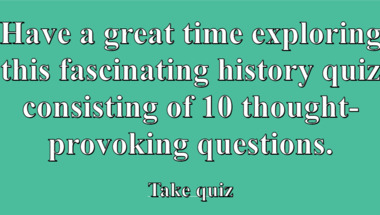
10 mixed questions

10 quite hard questions
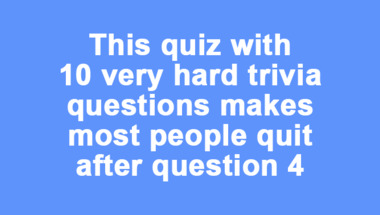
10 enjoyable trivia questions

10 mixed trivia questions

10 flavourful questions

A trivia quiz that you will fail miserably

Can you score 8/10?

10 fun and challenging questions

How high can you climb? Post in comments now

10 hard questions

Mixed categories

Target : score 3/10

10 fun questions

How many correct answers will you get?

10 Almost Impossible Questions

10 questions to answer

10 mixed up questions
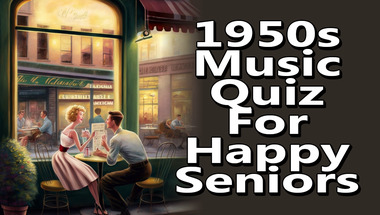
10 questions

10 expert questions
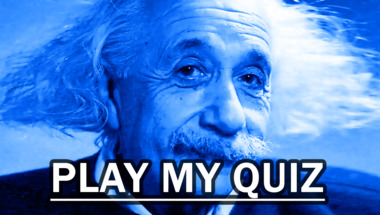
Here's a quiz for you!

10 mixed up questions

10 songs to guess

10 quite hard questions

10 random questions

How many correct will you get?

Will you lose the bet?

10 mixed questions to have fun with

10 questions
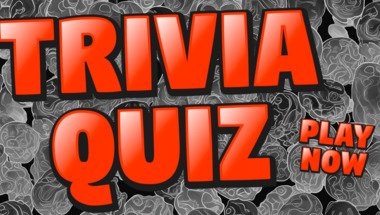
10 mixed questions

Do you know these amazing places?

How many correct will you get?
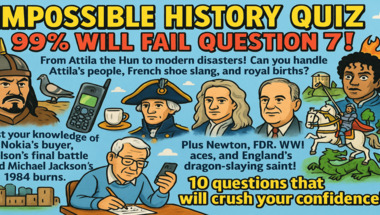
Can you correctly identify all of them?

Can you score 8/10?

10 questions

10 questions to answer
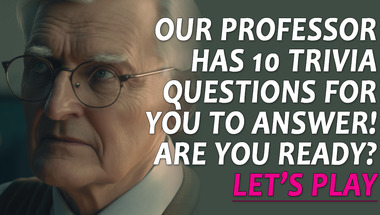
Score above 4/10 to beat it

We wrote 10 questions in mixed categories

10 rather difficult questions

Let's see how smart you really are!

10 questions

10 questions

10 questions to challenge your knowledge

Are you up for a quiz?
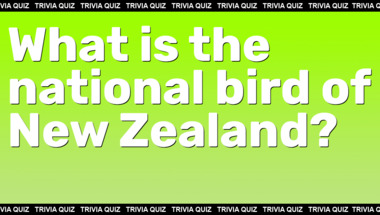
10 mixed questions for you

10 good questions
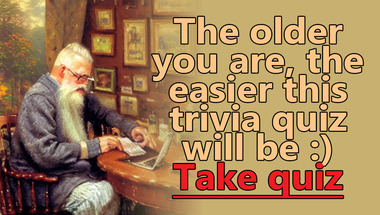
10 mixed questions

Let's see how smart you really are!

Test your knowledge with 10 trivia questions.

10 questions

How many of them will you answer correctly?

Do you have the brains?

10 mixed history questions

10 questions

10 questions to test your knowledge

10 hard questions

10 quite impossible questions

10 mixed questions

10 questions of mixed trivia

10 questions to test your knowledge

Trivia questions have long been a favorite way to test and expand our knowledge about the fascinating events, people, and cultures that have shaped human history. Delving into the stories behind well-known trivia questions not only gives us the answers, but also enriches our understanding of the world. In this article, we will explore ten intriguing trivia questions, unpacking the stories and historical contexts behind each one.
1. Which nurse tended soldiers in the Crimean War?
One of the most iconic figures in the history of nursing is Florence Nightingale. Born in 1820 in Italy to British parents, she became known as The Lady with the Lamp for her tireless night rounds tending to wounded British soldiers during the Crimean War (1853–1856). Nightingale's contributions went far beyond bedside care—she implemented standards of hygiene and organization in military hospitals, dramatically reducing mortality rates. Her work laid the foundation for modern nursing, and she later established the first secular nursing school in the world, the Nightingale Training School at St Thomas' Hospital in London. Today, her legacy endures, with International Nurses Day celebrated on her birthday, May 12th.
2. Which port was the final destination of the Titanic in 1912?
The RMS Titanic, famously deemed unsinkable, tragically struck an iceberg and sank on its maiden voyage in April 1912. Its voyage began in Southampton, England, with intended stops at Cherbourg, France and Queenstown (now Cobh), Ireland, before heading west. The ship’s final destination was New York City, a major port and hub of immigration and commerce at the time. The Titanic disaster claimed over 1,500 lives and led to significant changes in maritime safety regulations, including lifeboat requirements and the establishment of the International Ice Patrol.
3. During what War did the 1847 'Siege of Pueblo de Taos' take place?
The 'Siege of Pueblo de Taos' occurred during the Mexican-American War (1846–1848), a pivotal conflict that reshaped the map of North America. The siege, which took place in 1847 in what is now New Mexico, was part of a larger insurrection by local Hispano and Native American populations against the United States' occupation of the territory. U.S. forces ultimately stormed the fortified pueblo, ending the revolt. The Mexican-American War concluded with the Treaty of Guadalupe Hidalgo, ceding vast territories including California and New Mexico to the United States.
4. Whose quote is this: Never interrupt your enemy when he is making a mistake?
This sharp piece of strategic wisdom is attributed to Napoleon Bonaparte, the famed French military and political leader who rose to prominence during the French Revolution and its subsequent wars. Napoleon's mastery of battlefield tactics and political maneuvering made him a subject of study for generations of leaders. His quote remains relevant not only in military circles but also in business and politics, reminding us of the importance of patience and observation in adversarial situations.
5. What were the warriors of pre-industrial Japan called who followed the code of conduct known as Bushido?
The answer is the Samurai. These elite warriors adhered to Bushido, or the way of the warrior, a strict code emphasizing loyalty, honor, courage, and self-discipline. The Samurai class rose to prominence in the Heian period (794–1185) and became the ruling military class during the feudal period. Their influence extended beyond martial prowess; the ethos of Bushido influenced Japanese culture, literature, and philosophy. The class was officially abolished during the Meiji Restoration in the late 19th century, but the legacy of the Samurai endures in modern Japan.
6. Which of these countries did Sweden face in the Scanian War of 1675?
The Scanian War (1675–1679) was fought primarily between Sweden and Denmark-Norway, with some involvement from Brandenburg and other European nations. The conflict was rooted in the struggle for supremacy in Northern Europe, particularly over the territories of Scania, Halland, and Blekinge, which had been ceded from Denmark to Sweden in previous treaties. The war ended with the Treaty of Lund, largely restoring the status quo but confirming Swedish control over the contested provinces. The Scanian War is a significant episode in the broader series of conflicts that shaped the political landscape of Scandinavia.
7. What is the name of the railway that was built between 1891 and 1916 and runs from Moscow to Vladivostok?
This legendary railway is the Trans-Siberian Railway. Spanning over 9,000 kilometers (5,600 miles), it is the longest railway line in the world. Construction began in 1891 under Tsar Alexander III and was completed in 1916. The railway connects Moscow in the west with Vladivostok on the Pacific Ocean, traversing the vast expanse of Siberia. The Trans-Siberian Railway has played a crucial role in the economic development and integration of Russia, facilitating trade, migration, and military movement across the continent-sized country.
8. The Dalai Lama is the leader of a religious branch called the Gelug. What religion does this branch belong to?
The Gelug is the newest and most dominant school of Tibetan Buddhism, and the Dalai Lama is its most prominent spiritual leader. Founded by Je Tsongkhapa in the late 14th century, the Gelug school emphasizes monastic discipline, scholastic study, and philosophical rigor. The current (14th) Dalai Lama, Tenzin Gyatso, has been an international symbol for peace and compassion, advocating for Tibetan autonomy and Buddhist values worldwide.
9. What was the name of the currency in Germany before the euro?
Before adopting the euro in 2002, Germany’s currency was the Deutsche Mark (or Mark for short). Introduced in 1948 to replace the Reichsmark after World War II, the Deutsche Mark became a symbol of West Germany’s economic recovery and stability. It remained the official currency of unified Germany until the euro’s introduction. Many Germans held a strong sentimental attachment to the Mark, viewing it as a guarantor of prosperity and economic discipline.
10. John Dillinger became famous as what?
John Dillinger was one of the most infamous American gangsters of the early 20th century. Active during the Great Depression, Dillinger gained notoriety for his bank robberies, daring prison escapes, and confrontations with law enforcement. He was labeled “Public Enemy No. 1” by the FBI, and his exploits captivated the public imagination, feeding into the era’s fascination with outlaws and antiheroes. Dillinger’s life came to a violent end in 1934 when he was ambushed and killed by federal agents outside Chicago’s Biograph Theater. His story has inspired numerous books and films, cementing his place in American criminal folklore.
Conclusion
Exploring the details behind these trivia questions reveals the rich tapestry of history, culture, and human achievement. From the compassionate work of Florence Nightingale to the lawless exploits of John Dillinger, each answer provides a gateway to deeper understanding. Trivia is more than just a game; it is an invitation to discover the remarkable stories that have shaped our world.